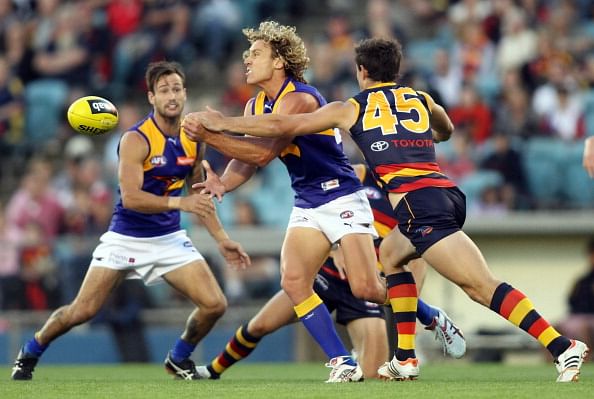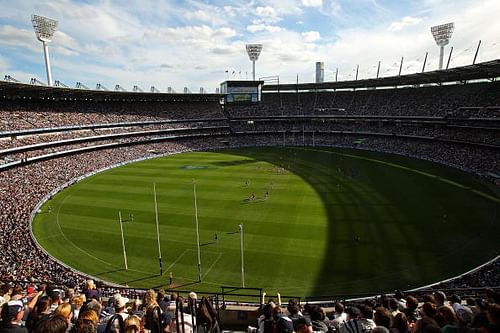
It's Footy fever, mate!

A game of Australian Rules Football
18 players a-side on a huge oval field, fisting a rugby-like ball, kicking it through sky-high posts, and almost a hundred thousand crazy fans raising the roof of the stadium – obscure it may seem to the uninitiated, but ask your Aussie friend about it, and see his eyes light up. Its more than a sport in the Land of Kangaroos, it’s almost like a religion; a force that binds the whole nation together. That’s Australian Rules football for you – the national sport of Australia.
The game of Footy (a popular term for the ball used in the sport) has been played in Australia for more than 150 years now. Despite its long standing presence, the sporting world outside Australia still identifies the nation with hockey and cricket. Incidentally, back in the day, the sport was introduced to keep cricketers fit during off-season. 155 years down the line, Footy has eclipsed cricket to become the most popular sport in the country, with cricket languishing down in 4th place in terms of mass popularity. “Cricket’s worst creation!” the cricketers in Australia call it now.
To the untrained eye, the sport looks a lot like rugby on first sight. However, it is anything but. The sport, in fact, requires skills from various other sports like basketball, volleyball, football, and yes, a bit of rugby as well. Most of the venues are originally cricket grounds, hence the oval field and the extra players on each team. Because the sport is played on cricketing venues, the players have to put in that extra mile during the game, making this, statistically, the sport where a single player covers the highest distance, averaging 8.5 miles per player per game.

A general view of play during the round five AFL match between the Carlton Blues and the Geelong Cats at Melbourne Cricket Ground
For a sports lover whose heart races with the excitement of outdoor team sports, it is almost impossible to not like Australian Rules Football. It is a free-flowing game with very few stoppages, and record-keepers identify it as the fastest outdoor team sport in the world. Played at breath-taking pace for 80 minutes (20 minutes per quarter), this sport is more about skills, speed and endurance than physical dominance.
What adds to the charm of the sport is the atmosphere surrounding the stadium on match-days. Colourful, vibrant, buzzing with euphoria; the fanatics of the game flock to the stadiums as if every game was a title decider. Speaking of which, the Grand Final of the Australian Football League (AFL), held in the Melbourne Cricket Ground (MCG), attracts more spectators (100,000 on an average) than any other sporting final in the world. Unsurprisingly, the AFL holds 4th position on the ranking of professional sports leagues around the world in terms of attendance per match.
Internationally, the AFL has been trying to promote the game for about half-a-century. The Footy is being kicked around in more than 50 countries now, including India (more about the Indian scenario will follow in future articles), and an International Cup is held every 3 years in Australia, where 18 teams representing their nations participate. Australia itself is an absentee from the cup by virtue of being leaps and bounds ahead of the rest in the sport; a noble exclusion to give other nations a fair chance. Australian Football has also succeeded in bringing together a Peace-Team comprising players of Israel and Palestine, something even the UN has failed to pull off so far.
Footy fans around the world are sensing exciting things ahead for the sport, and rightly so. The sport brings with it all the excitement that sports lovers could hope to dive into when they behold a sporting spectacle. The high-octane nature of the game is sure to catch on fast, and the people at AFL must be hoping Australian Football will scale the heights achieved by other popular international sports.